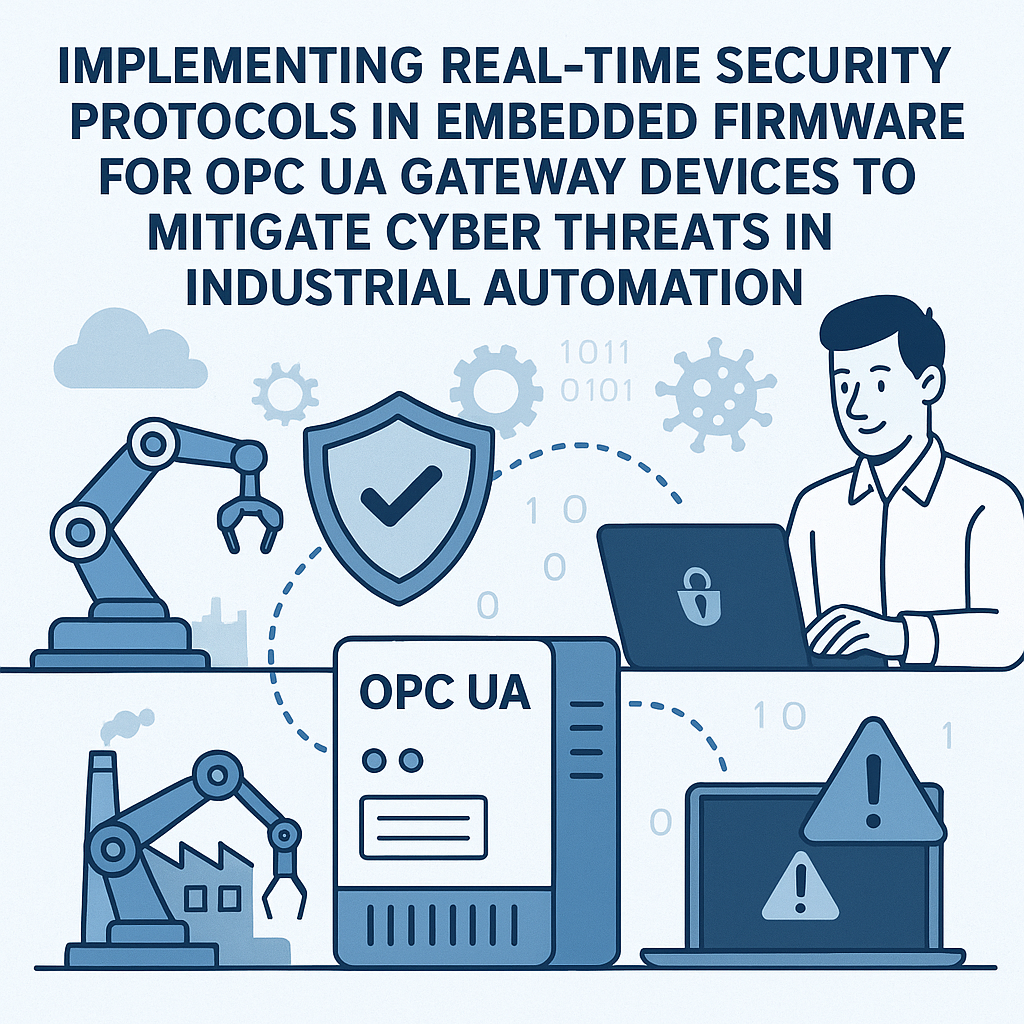Introduction
As industrial automation continues to evolve, the integration of advanced communication protocols like OPC UA (Open Platform Communications Unified Architecture) has become crucial for ensuring seamless data exchange between devices. However, with the increase in connectivity, the risk of cyber threats also rises. Implementing real-time security protocols in embedded firmware for OPC UA gateway devices is essential to mitigate these threats and safeguard industrial operations.
Understanding OPC UA and Its Vulnerabilities
OPC UA is designed to facilitate secure and reliable communication in industrial environments. Despite its robust architecture, it is not immune to cyber threats. Common vulnerabilities include:
- Unauthorized Access: Weak authentication mechanisms can allow unauthorized users to access sensitive data.
- Data Integrity Issues: Without proper checks, data can be altered during transmission.
- Denial of Service Attacks: Overwhelming the system with requests can lead to service disruptions.
Implementing Real-Time Security Protocols
To protect OPC UA gateways, real-time security protocols must be integrated into the embedded firmware. Here are some key strategies:
1. Enhanced Authentication Mechanisms
Implementing multi-factor authentication (MFA) can significantly reduce the risk of unauthorized access. This involves:
- Using passwords alongside biometric verification.
- Employing hardware tokens or mobile authentication apps.
2. Secure Data Transmission
Data integrity and confidentiality can be ensured through:
- Encryption: Utilize algorithms like AES (Advanced Encryption Standard) to encrypt data at rest and in transit.
- Message Signing: Use digital signatures to verify the authenticity of messages exchanged between devices.
3. Regular Firmware Updates
Keeping firmware up-to-date is critical for addressing emerging vulnerabilities. This can be achieved by:
- Establishing an automated update mechanism that can roll out security patches as they become available.
- Implementing a fallback option to restore previous firmware versions in case of update failures.
4. Intrusion Detection Systems (IDS)
Embedding IDS within the firmware can help in early detection of potential threats. Considerations include:
- Monitoring network traffic for unusual patterns that may indicate an attack.
- Configuring alerts to notify administrators of suspicious activities in real-time.
5. Security Audits and Compliance
Conducting regular security audits is vital for ensuring that the implemented measures are effective. This involves:
- Assessing compliance with industry standards like ISO/IEC 27001.
- Testing the security protocols through penetration testing and vulnerability assessments.
Challenges in Implementation
While the necessity of real-time security protocols is clear, several challenges can arise during implementation:
- Resource Constraints: Limited processing power and memory in embedded devices can restrict the complexity of security protocols.
- Integration Issues: Ensuring compatibility between security measures and existing systems can pose challenges.
- Cost Implications: Budget limitations can hinder the adoption of advanced security technologies.
Conclusion
Implementing real-time security protocols in embedded firmware for OPC UA gateway devices is crucial to mitigate cyber threats in industrial automation. By employing enhanced authentication, secure data transmission, regular updates, intrusion detection systems, and conducting security audits, organizations can create a robust defense against potential attacks. Despite the challenges, prioritizing security is essential to protect critical infrastructure and ensure the integrity of industrial operations.



